Zeuzera pyrina (wood leopard moth)
Identity
- Preferred Scientific Name
- Zeuzera pyrina (L.) 1761
- Preferred Common Name
- wood leopard moth
- Other Scientific Names
- Cossus aesculi
- Zeuzera aesculi (L.)
- Zeuzera leuconotum
- International Common Names
- Englishleopard mothmoth, leopardwood leopard moth
- Spanishtaladro amarillo de los troncostaladro de los frutales
- Frenchcoquettezeuzerezeuzèrezeuzere du poirier
- Local Common Names
- Denmarktraeborer, plettet
- GermanyBlausiebBohrer, Apfel-Bohrer, Rosskastanien-
- Israelsas hanamer
- Italyperdilegno biancoperdilegno giallorodilegno giallotarlo degli alberi di fruttoZeuzera bianco
- NetherlandsHoutrups, geleHoutvlinder, gestippelde
- Norwaygreindreper
- Swedentraefjaeril, blaflaeckig
- Turkeysari agac kurdu
- EPPO code
- ZEUZPY (Zeuzera pyrina)
Pictures
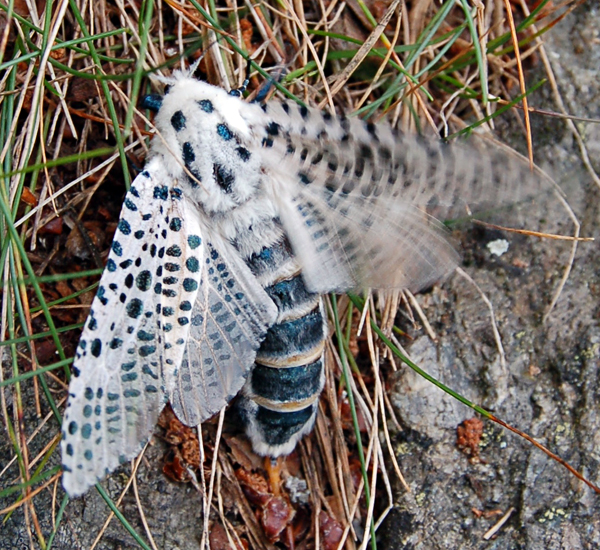
Adult female
Zeuzera pyrina (leopard moth or wood leopard moth); adult female, wings flapping. Larvik, Norway. July, 2011.
©Arnstein Rønning - CC BY 3.0

Zeuzera pyrina
Zeuzera pyrina on bark.
Arnstein Rønning
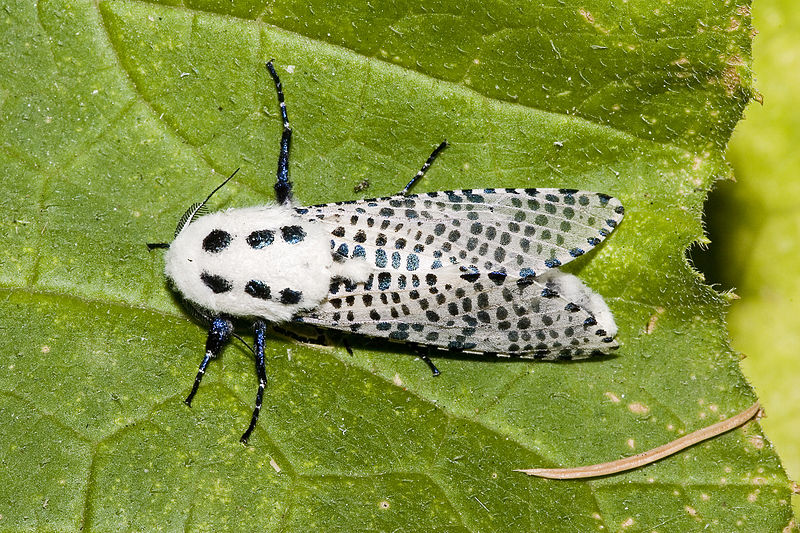
Zeuzera pyrina
Zeuzera pyrina on a leaf.
Olaf Leillinger
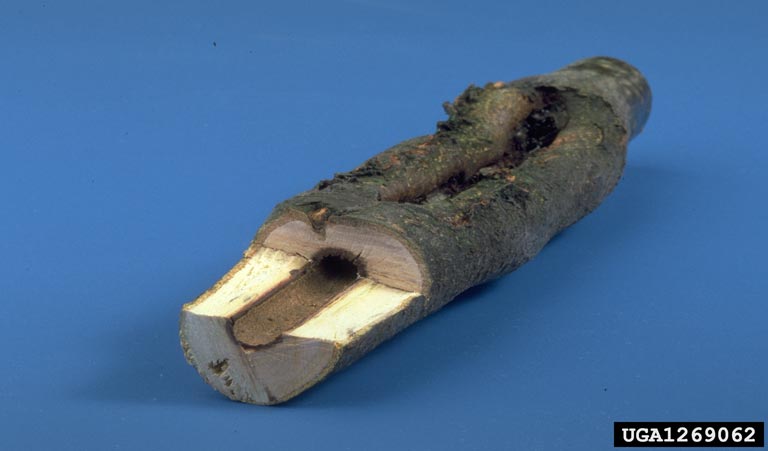
Zeuzera pyrina
Beat Forster, Swiss Federal Institute for Forest, Snow and Landscape Research, bugwood.org
Refer to Bugwood: http://www.bugwood.org/ImageUsage.html
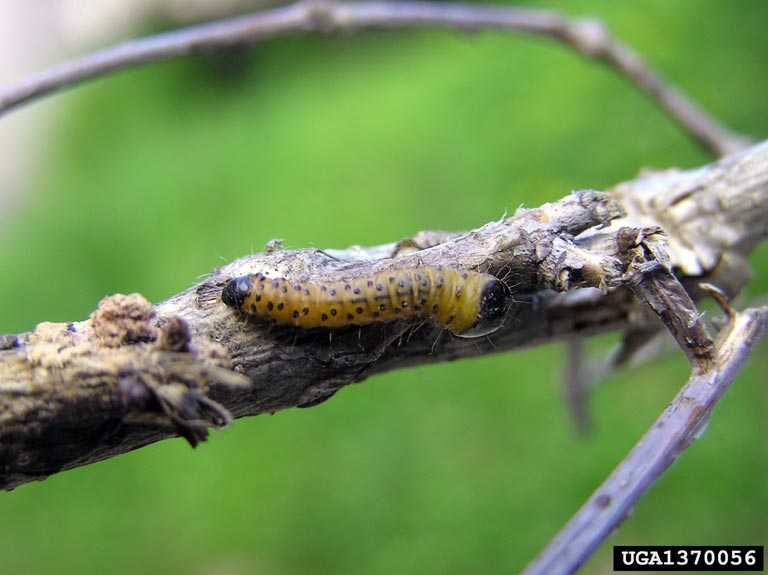
Zeuzera pyrina
Milan Zubrik, Forest Research Institute - Slovakia, bugwood.org
Refer to Bugwood: http://www.bugwood.org/ImageUsage.html
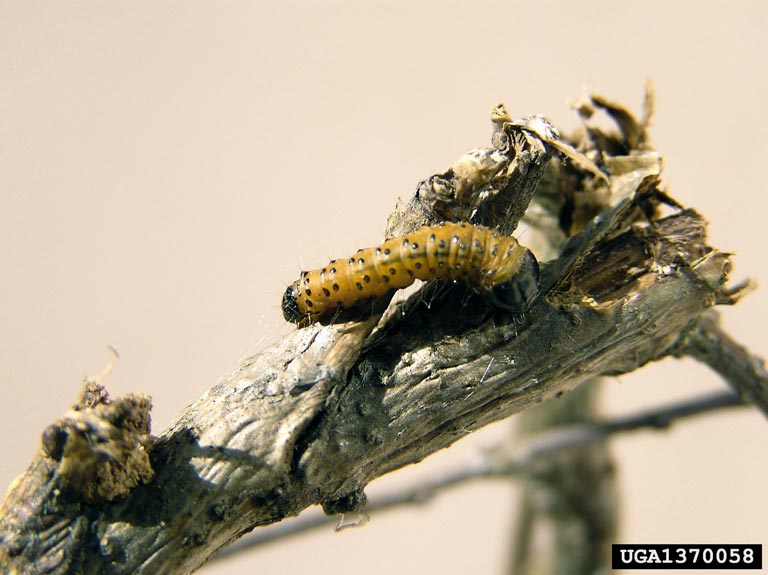
Zeuzera pyrina
Milan Zubrik, Forest Research Institute - Slovakia, bugwood.org
Refer to Bugwood: http://www.bugwood.org/ImageUsage.html
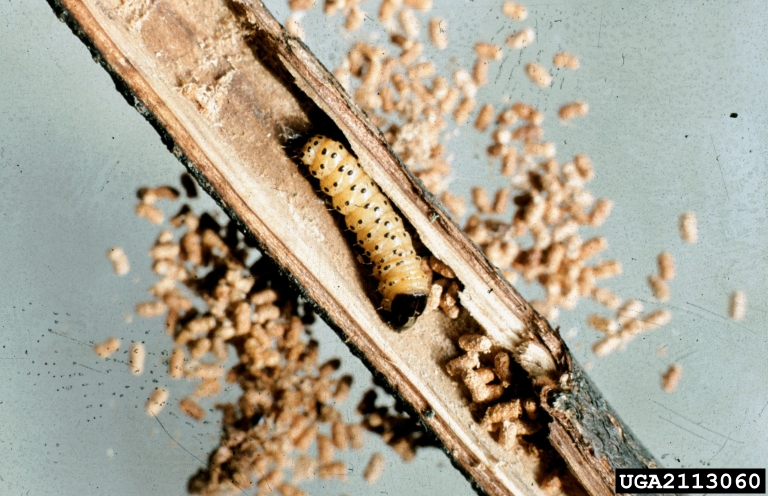
Zeuzera pyrina
Petr Kapitola, Central Institute for Supervising and Testing in Agriculture, bugwood.org
Refer to Bugwood: http://www.bugwood.org/ImageUsage.html
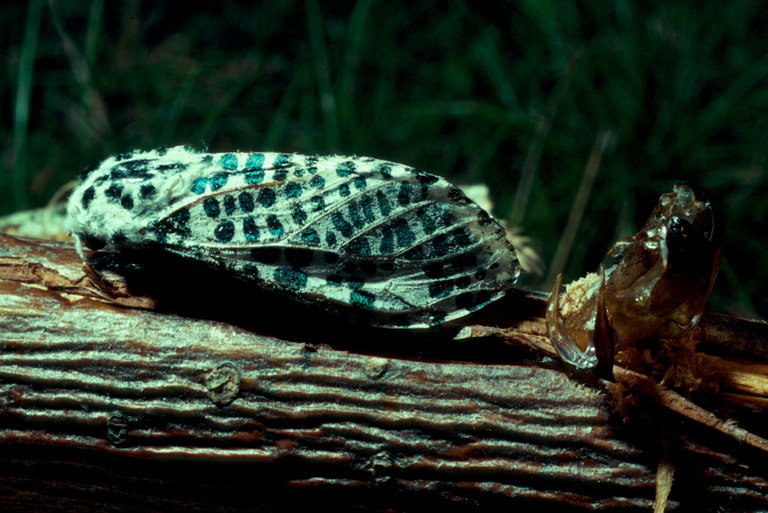
Zeuzera pyrina
Louis-Michel Nageleisen, bugwood.org
Refer to Bugwood: http://www.bugwood.org/ImageUsage.html
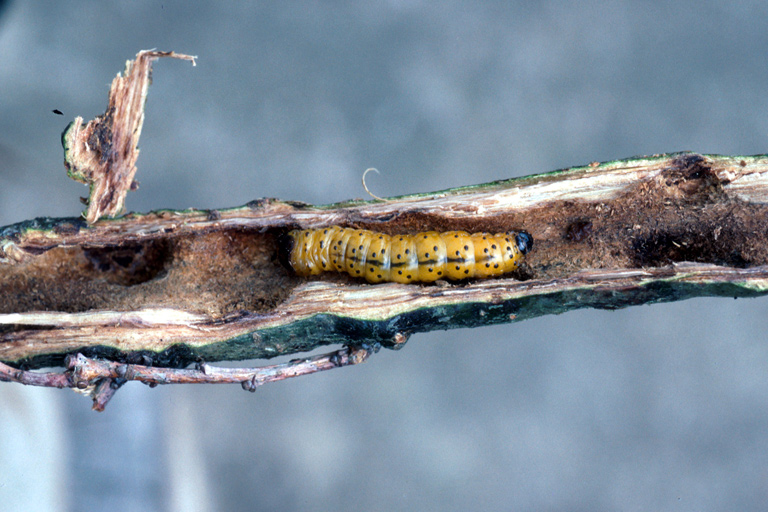
Zeuzera pyrina
Jean-Paul Grandjean, bugwood.org
Refer to Bugwood: http://www.bugwood.org/ImageUsage.html
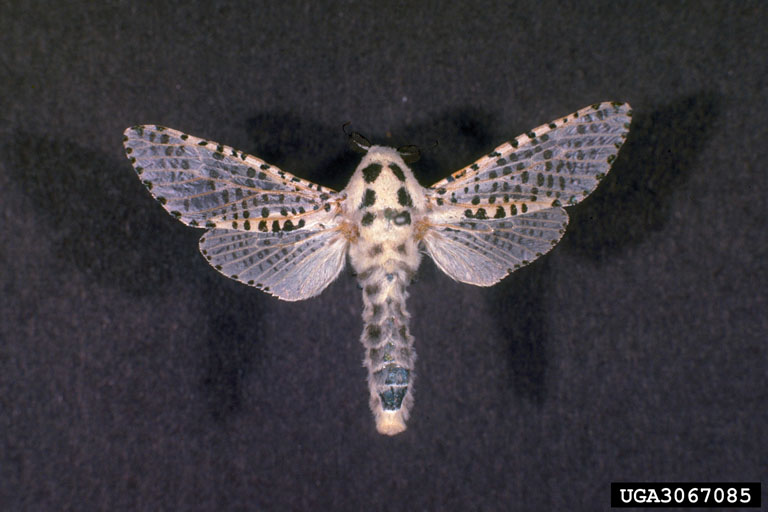
Zeuzera pyrina
James Solomon, USDA Forest Service, bugwood.org
Refer to Bugwood: http://www.bugwood.org/ImageUsage.html
Distribution
Host Plants and Other Plants Affected
Symptoms
Dead shoot tips appear and leaves on the apical portions of branches discolour prematurely. Infested branches break upon bending, due to the galleries made by caterpillars. Young caterpillars first enter shoots near the tip, and move onto older wood further down the branch when the shoot dies. Entry holes can be recognized by the frass, which resembles pellets of sawdust, and accumulates outside the entry hole for 6-9 months. Sufficient frass may fall on the ground to be a conspicuous symptom of infestation (Gatwick, 1992).
List of Symptoms/Signs
| Symptom or sign | Life stages | Sign or diagnosis |
|---|---|---|
| Plants/Stems/internal feeding | ||
| Plants/Stems/visible frass |
Impact
Z. pyrina is one of the most important pests of apple and pear orchards in Mediterranean regions. It can also be a serious pest of olive. On young trees, one caterpillar is enough to kill a tree, whereas 3-year-old trees can become extremely vulnerable to wind damage due to damage of the central axis. Older trees can be severely damaged, particularly in dry years and on dry ground. In the UK, damage caused by Z. pyrina tends to be more severe following hot, dry summers (Gatwick, 1992). Trees weakened by leopard moth attacks are more susceptible to damage from other xylophagous pests, such as the goat moth (Cossus cossus), hornet clearwing moth (Synanthedon myopaeformis) and bark beetles. The woolly aphid (Eriosoma lanigerum) can use old larval galleries of Z. pyrina as a refuge, enabling them to evade chemical treatments.
Information & Authors
Information
Published In
Copyright
Copyright © CABI. CABI is a registered EU trademark. This article is published under a Attribution-NonCommercial-NoDerivatives 4.0 International (CC BY-NC-ND 4.0)
History
Published online: 16 November 2021
Language
English
Authors
Metrics & Citations
Metrics
SCITE_
Citations
Export citation
Select the format you want to export the citations of this publication.
EXPORT CITATIONSExport Citation
View Options
View options
Get Access
Login Options
Check if you access through your login credentials or your institution to get full access on this article.


